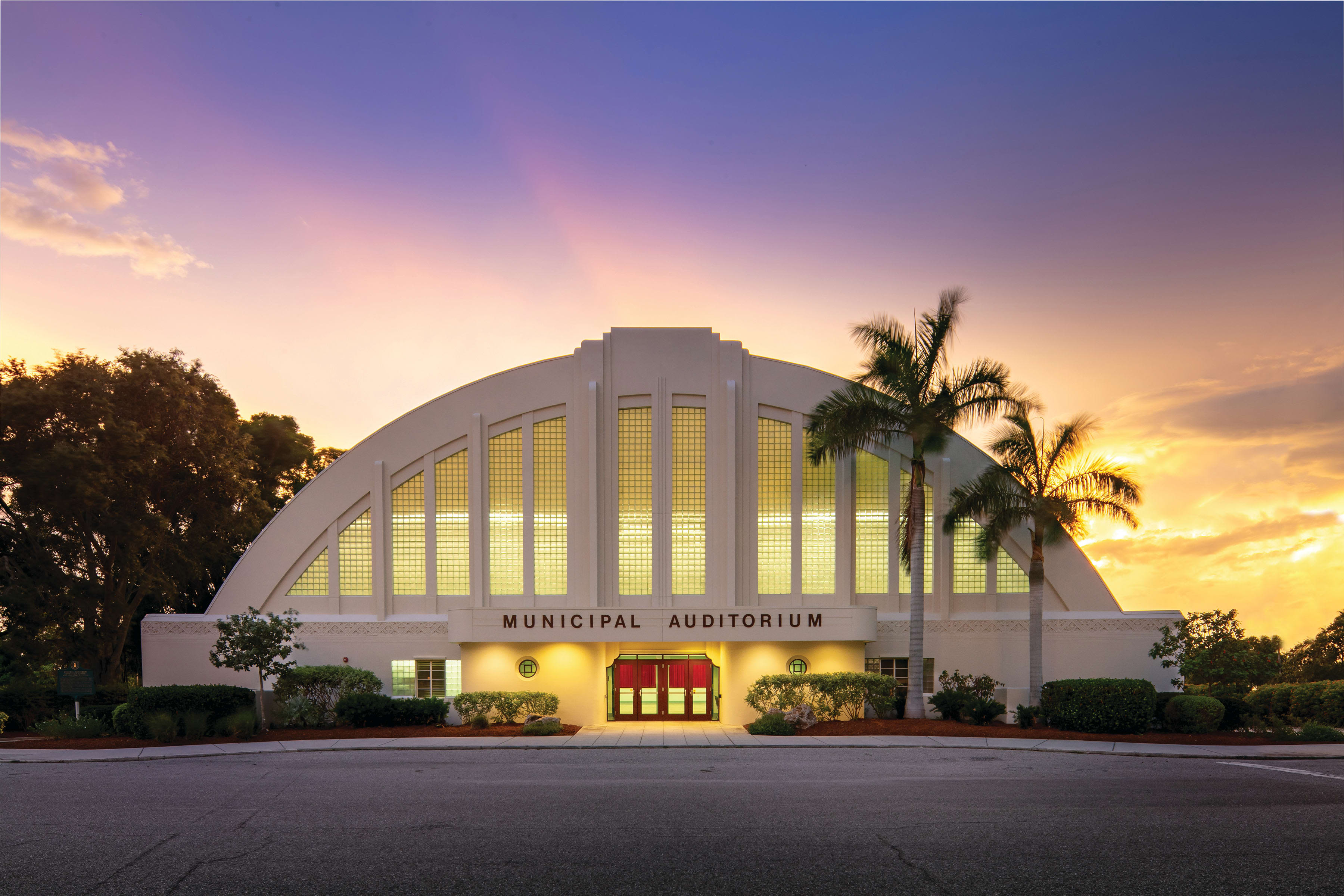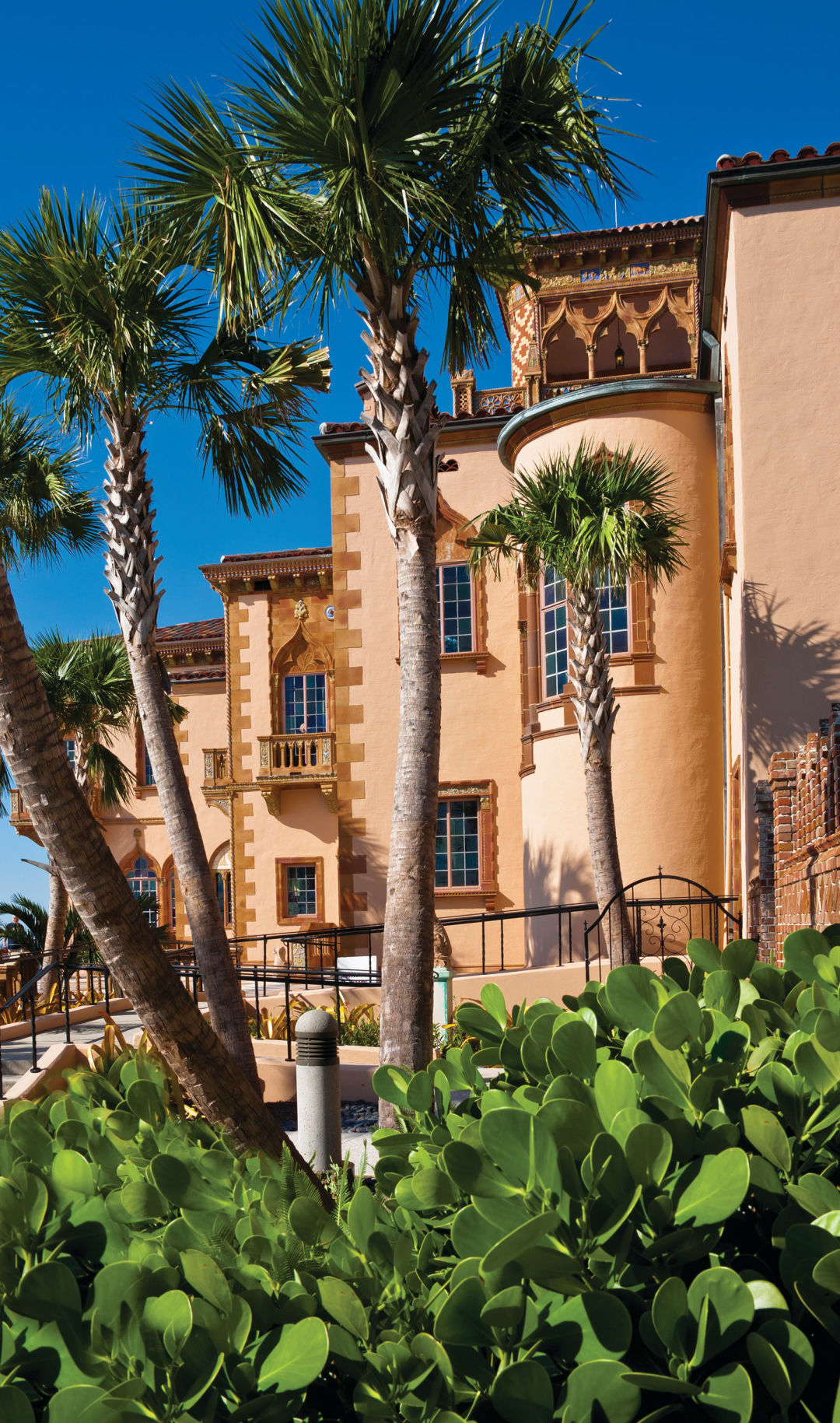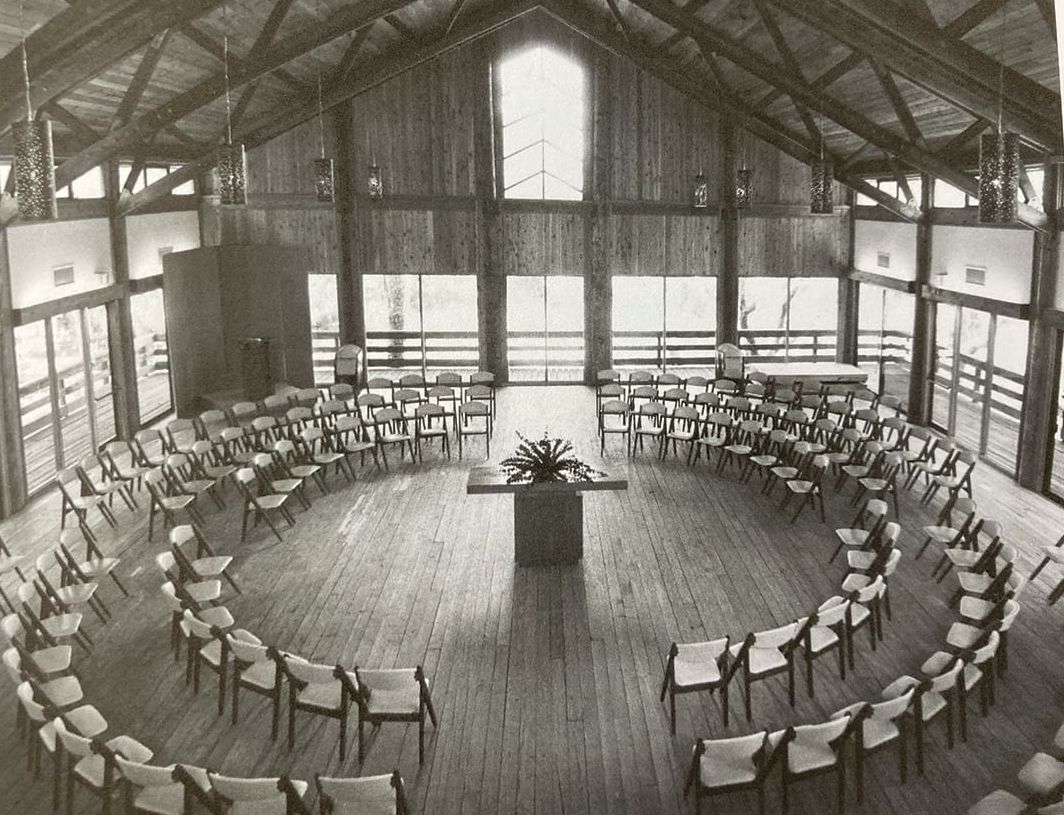
11 Sarasota Landmarks We Love
Architecture does more than define spaces—it shapes communities. With that in mind, Architecture Sarasota has created Moderns That Matter, a list of 100 sites that capture the essence of Sarasota’s character and distinct sense of place. Organized across 10 categories, these landmarks trace more than a century of the city’s architectural and cultural heritage during a time of rapid transformation, when new developments are sprouting up more quickly than ever before.
The selection process involved more than 340 residents, who submitted more than 580 nominations through an online survey. The final list was then refined with input from outside experts, based on a set of thoughtful benchmarks.
Marty Hylton, the president of Architecture Sarasota, sums up the main criteria for a building’s inclusion: “It just has to make you smile.” While making the list doesn’t protect structures from the wrecking ball, Moderns That Matter celebrates the unique power of architecture to evoke memories and spark reactions and emotions. Out of the list of 100, we’ve picked 11 of our favorites—one from each decade represented in the list—to showcase the dramatic evolution of Sarasota’s style.
1920s
Ca’ d’Zan
5401 Bay Shore Road, Sarasota

Image: Marje/iStock.com
This Mediterranean Revival mansion on Sarasota Bay was built in 1926 as the winter retreat of circus mogul John Ringling and his wife Mable. The home, with its Venetian Gothic and Renaissance influences, served as a symbol of the first Florida land boom. Today, it stands as a historic icon, where visitors can see firsthand the grandeur of the Ringlings’ legacy. (Note: The interior and back portion of the building facing the water are currently closed to visitors as recovery from Hurricanes Helene and Milton continues.)
1930s
Sarasota Municipal Auditorium
801 N. Tamiami Trail, Sarasota

Image: Ryan Gamma
Built in 1938, the auditorium is a historic multi-purpose venue. Owned and operated by the City of Sarasota, it has 10,000 square feet of exhibition space and a 1,500-square-foot Art Deco-style stage. It was financed in part by the federal Public Works Administration and supported by local civic leaders and government officials when it opened at the height of the 1937-1938 tourist season. It’s listed on the National Register of Historic Places, and in 2021, a respectful rehabilitation earned it the AIA Florida Merit Award for Historic Preservation and Restoration.
1940s
Bahia Vista Estates
3901 Bahia Vista St., Sarasota

Mobile homes gained popularity in Florida thanks to their affordability and the state’s appeal as a retirement spot. Early adopters dubbed “Tin Can Tourists” helped drive the trend, leading to the growth of mobile home communities like Bahia Vista Estates, a 55-plus community with roughly 492 units. Despite being vulnerable to flooding and hurricanes, in 2023, there were more than 100 mobile home parks in the Sarasota area, many dating from the 1960s and 1970s.
1950s
Greater Hurst Chapel African Methodist Episcopal Church
2730 N. Links Ave., Sarasota

Newtown, which was first established in 1914, grew when Sarasota’s Black residents were pushed out of Overtown (now the Rosemary District). In addition to providing space in which to worship, neighborhood churches were centers for a range of community activities. When the local school district decided to close nearby Booker High School in the 1960s, Hurst Chapel and other churches hosted so-called “Freedom Schools,” where volunteer teachers taught
until Booker reopened.
1960s
Mel-O-Dee Restaurant
4685 N. Tamiami Trail, Sarasota

The Mel-O-Dee lost its iconic sign because of a 2021 auto accident, but everyone knows the name of this now-vacant building even without it. The diner was run by owners Daniel and Betty Pischer until their retirement in 1973, and the restaurant lasted until 2003. The Mel-O-Dee retains its mid-century modern details with a Polynesian influence, but, long neglected, it has fallen into disrepair. These days, vintage matchboxes and postcards of the diner in its heyday can be found on eBay, and the property sold for $1.3 million last August.
1970s
Siesta Key Chapel
4615 Gleason Ave., Sarasota

Designed by Frank Folsom Smith and James Holliday, the chapel is known as “God’s treehouse” and is easily identified by its soaring interior framed with exposed wood. Rather than stained glass, the clear windows blur the lines between inside and out, allowing for lush views of the many surrounding trees. Over the years, Sunday school rooms, a nursery, meeting rooms, a fellowship hall with a kitchen and an office and study for the pastor were added. In 2008, an expansion brought a larger outdoor deck.
1980s
One Sarasota Tower
2 N. Tamiami Trail, Sarasota

The embodiment of 1980s style, yet aging well, One Sarasota Tower’s 12 stories of mirrored glass panes soothe the most demanding narcissist. The landmark building spans 137,139 square feet and towers above the heart of Sarasota at the intersection of Tamiami Trail and Gulfstream Avenue near the John Ringling Causeway. As downtown has evolved around it, One Sarasota continues to shape the skyline. Owned and managed by ICORR Properties, it’s home to businesses like Morgan Stanley, Raymond James and more.
1990s
Selby Public Library
1331 First St., Sarasota

At 73,000 square feet, Selby is the largest library in the county. Built in 1998, it’s a two-story building with a 200-seat auditorium, an affordable used bookstore and an arched saltwater aquarium that frames the entrance to the kids’ section. When you take into account its parking lot and outside amenities, it occupies an entire city block, and is anchored by wide columns that resemble upside-down sundae goblets. Mammoth windows flood the interior with natural light.
2000s
John Ringling Causeway
Downtown Sarasota

The iconic bridge spans Sarasota Bay and connects downtown to Bird Key, St. Armands Circle and Lido Key, offering a three-mile round trip of scenic views. John Ringling financed the construction of the original bridge in 1925 at a price tag of $750,000 (roughly $13 million today). At the time, it was praised as a significant engineering feat, but increased traffic demands led to the bridge’s replacement in 1959, and in 2001, construction began on the current version, which has become so central to Sarasota’s skyline that it graces the city seal.
2010s
Elling Eide Center
8000 S. Tamiami Trail, Sarasota

Image: Ryan Gamma
This 17,000-square-foot building houses the Eide Asian and American art collection and the Elling O. Eide Library, which possesses a large archive of Asian literature. Hidden on a 72-acre estate along Sarasota Bay, the center is a secluded treasure. Eide, a reclusive collector of Chinese and Asian books and art, envisioned his estate as a tranquil haven for scholars. Completed posthumously, the center now attracts international researchers and offers lectures and tours.
2020s
Marie Selby Botanical Gardens
1534 Mound St., Sarasota

Image: Ryan Gamma
Selby is a living museum that offers a connection to native nature and regional history. The downtown Sarasota campus focuses on epiphytic plants and received a major facelift in recent years, with the completion of phase one of a dramatic re-envisioning that added 188,030 square feet of new facilities and amenities—including a new restaurant that’s 100 percent powered by solar energy. It also ranked No. 3 on USA Today’s list of best botanical gardens last year, and The Wall Street Journal recognized the campus’ overhaul as one of the country’s best architecture projects of 2024.